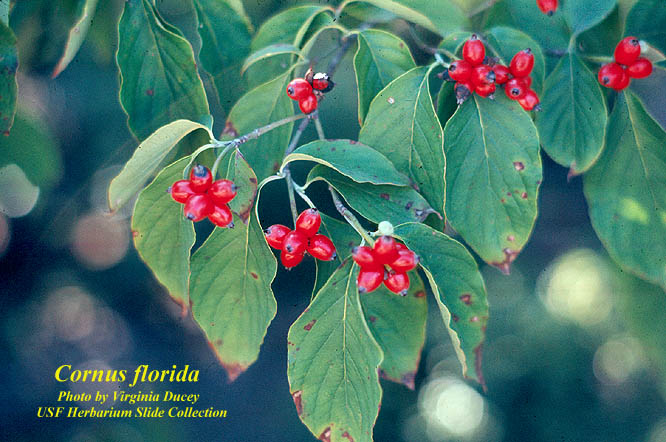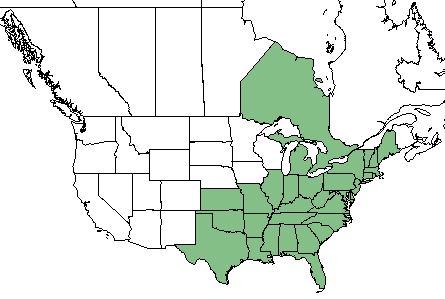Difference between revisions of "Cornus florida"
(→Diseases and parasites) |
(→Conservation and Management) |
||
| Line 45: | Line 45: | ||
==Conservation and Management== | ==Conservation and Management== | ||
| + | ''C. florida'' is listed as endangered by the Maine Department of Conservation Natural Areas Program, exploitably vulnerable by the New York Department of Environmental Conservation, Division of Land and Forests, and threatened by the Vermont Department of Fish and Wildlife Nongame and Natural Heritage Program. <ref name= "USDA Plant Database"/> | ||
==Cultivation and restoration== | ==Cultivation and restoration== | ||
Revision as of 19:34, 18 May 2018
| Cornus florida | |
|---|---|

| |
| Photo by the Atlas of Florida Plants Database | |
| Scientific classification | |
| Kingdom: | Plantae |
| Division: | Magnoliophyta - Flowering plants |
| Class: | Magnoliopsida - Dicots |
| Order: | Cornales |
| Family: | Cornaceae |
| Genus: | Cornus |
| Species: | C. florida |
| Binomial name | |
| Cornus florida L. | |

| |
| Natural range of Cornus florida from USDA NRCS Plants Database. | |
Contents
Taxonomic Notes
Synonyms: Cynoxylon floridum (Linnaeus) Rafinesque ex B.D. Jackson; Benthamidia florida (Linnaeus) Spach
Varieties: Cornus kousa House
Description
C. florida is a perennial shrub/tree of the Cornaceae family native to North America and Canada. [1]
Distribution
C. florida can be found in the south- and mid-eastern United States, as well as the Ontario region of Canada. [1]
Ecology
Habitat
C. florida thrives in dry to moist forests and wetlands. [2]
Phenology
C. florida flowers February-April, October, and November. [3]
Fire ecology
C. florida is not fire resistant, but has a medium fire tolerance. [1]
Use by animals
C. florida is somewhat palatable to browsing animals, not highly palatable to grazing, and inedible for humans. [1]
Diseases and parasites
C. florida has been impacted since the 1980s by widespread infection by the dogwood anthracnose fungus (Discula destructive). [2]
Conservation and Management
C. florida is listed as endangered by the Maine Department of Conservation Natural Areas Program, exploitably vulnerable by the New York Department of Environmental Conservation, Division of Land and Forests, and threatened by the Vermont Department of Fish and Wildlife Nongame and Natural Heritage Program. [1]
Cultivation and restoration
Photo Gallery
References and notes
- ↑ 1.0 1.1 1.2 1.3 1.4 USDA Plant Database https://plants.usda.gov/core/profile?symbol=COFL2
- ↑ 2.0 2.1 Weakley, A. S. (2015). Flora of the Southern and Mid-Atlantic States. Chapel Hill, NC, University of North Carolina Herbarium.
- ↑ PanFlora Author: Gil Nelson URL: http://www.gilnelson.com/PanFlora/ Date Accessed: 5/18/18